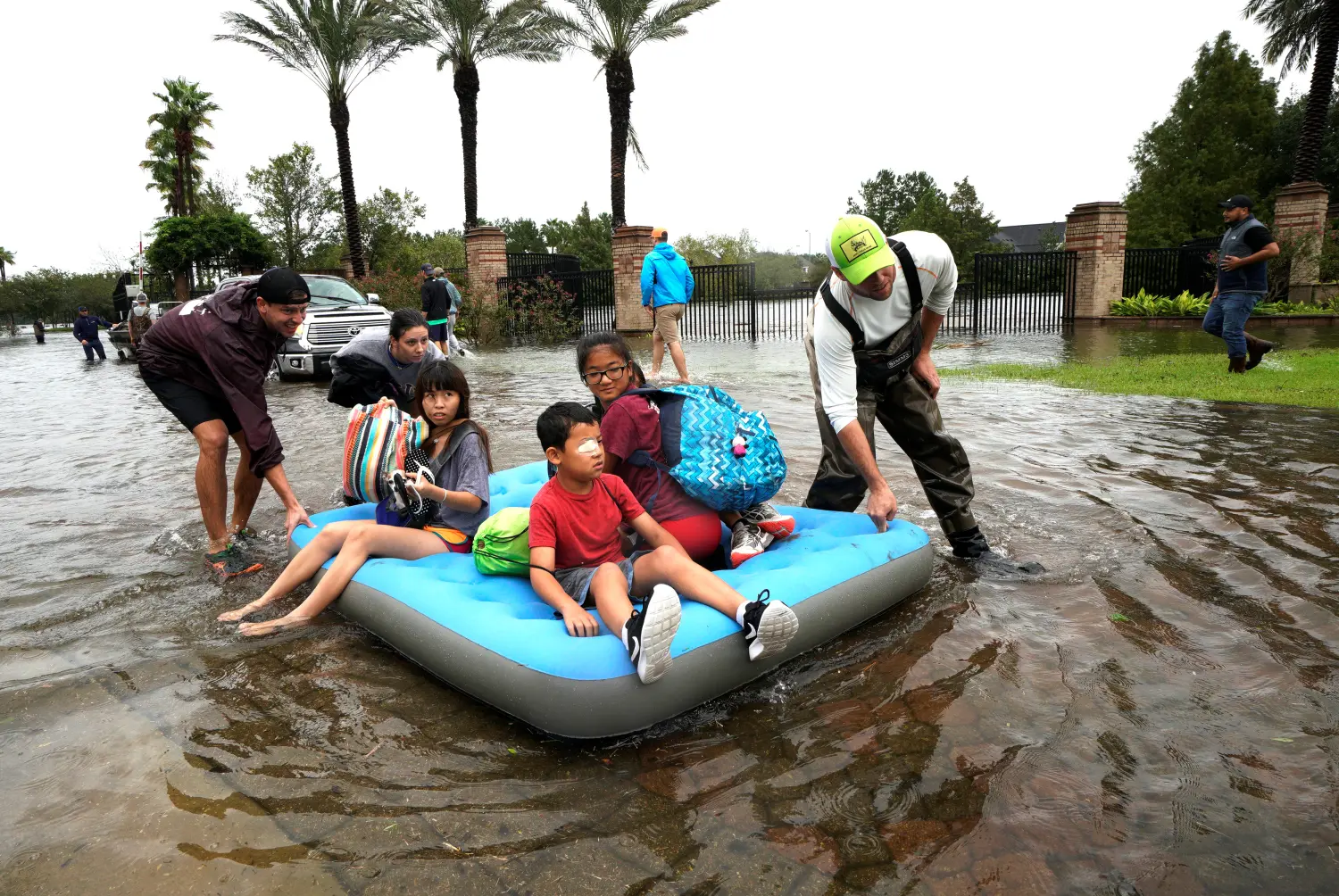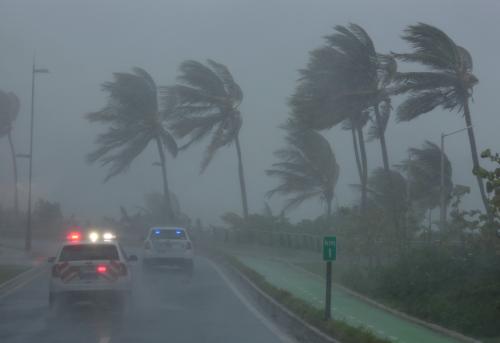Hurricane Harvey made landfall on the Texas coast nearly 12 years to the day from when Hurricane Katrina (and then Hurricane Rita) ravaged the Gulf Coast. The storms differ from one another in important ways, from how they inflicted their harm to the populations they have affected and damage they have done. However, the communities victimized by Hurricanes Harvey and Katrina are now bound together—in part because of the helping hands that each lent to the other—and the lessons learned from Katrina could help to inform the recovery efforts underway in Texas.
Katrina destroyed or badly damaged most school buildings in New Orleans, displacing thousands of students, imposing profound trauma, and prompting the reorganization of public schooling in New Orleans. The damage to Houston-area schools—and harm to their students—is still coming into focus. A Sept. 2 report from the Houston Independent School District (HISD) says it had assessed 245 campuses as of Saturday morning. HISD believes 115 schools are likely to open on Sept. 11 (the delayed first day of school), yet 53 have “major” damage, and 22 have “extensive” damage.
Superintendent Richard Carranza estimates that 10,000 to 12,000 HISD students will be temporarily moved as schools are repaired. He acknowledges that much remains to be determined, including what will happen with displaced students. One possibility is “double shifts” on some campuses, with one school occupying a campus in the morning and early afternoon and a different school occupying that campus in the afternoon and evening. In areas surrounding Houston, many districts have postponed the beginning of the school year and some face extraordinary disruptions. For example, Aransas County Independent School District, which is based in Rockport, Texas, is preparing for the possibility that it is months away from reopening and advising parents to “go ahead and enroll your student in a school district where you are currently staying or where you have family.” While school plans remain uncertain, many students affected by Harvey clearly have difficult days ahead of them.
Katrina’s effects on children’s physical health, mental health, and schooling
Carolyn Kousky describes three ways that natural disasters affect children: effects on physical health, effects on mental health, and effects on schooling. All three are evident in children who lived through Katrina. Physical health issues touched even the youngest children who experienced the hurricane, as pregnant mothers who were severely affected by Katrina were unusually likely to give birth prematurely and to infants of low birth weight. Many older children displaced from their homes lost access to medical care, with, for example, numerous cases of hospitalization for asthmatic episodes resulting from a lack of access to medications. With respect to mental health, Kousky writes that children of adults who suffer from post-disaster symptoms tend to struggle with post-disaster symptoms themselves. Katrina led to large increases in mental illness among adults, particularly among young and middle-aged black females. High levels of post-traumatic stress were evident among children as well. This was especially the case for young and female children and those who exhibited anxiety before the storm.
Although Katrina clearly disrupted many students’ schooling, displacing nearly 200,000 public school students in Louisiana alone, the long-term damage to these students’ academic performance seems remarkably modest. In fact, some research indicates that displaced students gained ground on their non-displaced peers after the hurricane. Bruce Sacerdote compared the performance of Orleans Parish students displaced by the 2005 storms to a comparison group of students who remained where they were. Evacuees’ math scores dropped 0.1 to 0.2 standard deviations relative to their peers in the following spring of 2006. Over the next few years, however, that gap shrunk, went away, and eventually flipped, with evacuees actually scoring 0.1 to 0.2 standard deviations higher in 2009. Sacerdote suspects the initial dip reflects the immediate costs of disruption and trauma, while the longer-term gains reflect the benefits from many students switching to higher-performing schools. This is consistent with results from a study by John Pane and colleagues, which found modest, negative impacts on test scores after the first year that varied by the types of schools that students exited and entered. A third study, different in its aim, examined how inflows of students displaced by Katrina affected the students already enrolled in those schools. It found little or no impact on non-displaced students’ academic achievement but some effects on their rates of absenteeism and discipline.
Of course, a comprehensive review of how Hurricane Katrina affected New Orleans students would require a closer look at the charter school reforms that fundamentally restructured public education in the city in the years after Katrina. The effects on student test scores look very positive, although many have criticized other aspects of the reforms. Regardless, this type of large-scale restructuring seems unlikely in Houston—a city less primed for a state takeover, with a larger portion of its school buildings appearing likely to survive the storm.
Implications for Texas
So what does this research mean for students affected by Hurricane Harvey and those looking to help them? Kousky makes a few suggestions, based on lessons learned from natural disasters around the world. She urges that children should, as quickly as possible, reunite with their families and resume familiar, structured activities, including getting back to school. Schools, for their part, should be aware of, and prepared to help with, the varied ways that children respond to disasters and the vast assortment of traumas they might confront. Some school-based interventions with young Katrina victims have shown promise in reducing post-traumatic stress, grief, and depression.
The research on students displaced by Katrina also warrants an optimistic takeaway, at least over the long run. When crises have forced students to switch schools, many have performed well academically, even surpassing the performance of their non-displaced peers. This is especially true when they move to relatively high-performing schools. Moreover, while displaced students have brought challenges and needs with them, they have not badly disrupted the learning of their peers. Children are resilient, and, with the help of concerned adults, have gotten through this type of crisis before.
The Brookings Institution is committed to quality, independence, and impact.
We are supported by a diverse array of funders. In line with our values and policies, each Brookings publication represents the sole views of its author(s).







